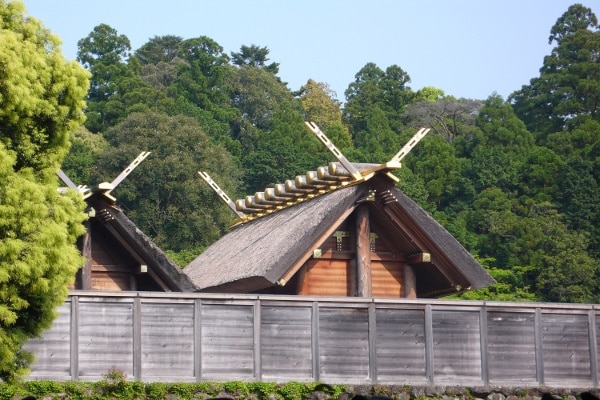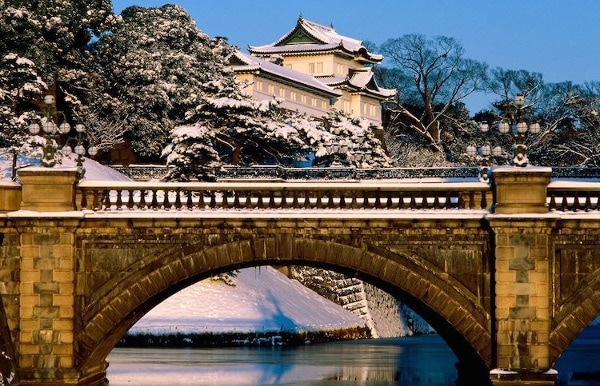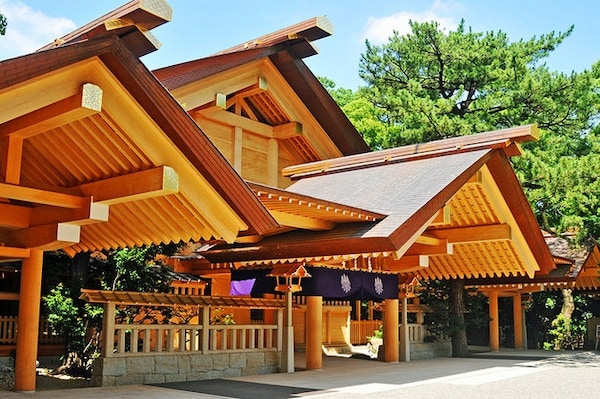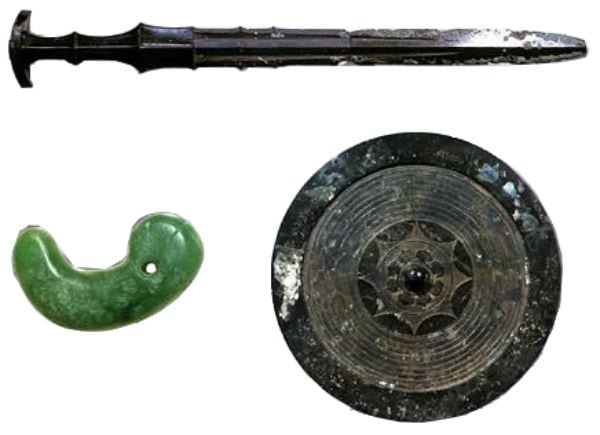Searching for the Imperial Regalia of Japan
The Imperial Regalia of Japan are the country's most highly guarded treasures. They're so heavily protected, in fact, that only a handful of people have actually seen them. Consisting of a sword, a mirror and a jewel, these relics are said to be housed in three sacred sites spread around the nation.
Yata no Kagami—Ise Grand Shrine (Mie)

https://en.wikipedia.org/wiki/Ise_Grand_Shrine
The Yata no Kagami, the sacred mirror, was used to lure Amaterasu, the sun goddess, out of hiding. The goddess had hidden in a cave following an argument with Susano-o, the god of storms and the sea, plunging the world into darkness. The mirror was given to Amaterasu's grandson Ninigi-no-Mikoto, who is regarded to be the great-grandfather of Japan's first emperor, Jimmu, through whom it passed into the hands of the Imperial Family.
The mirror is now supposedly housed at Ise’s inner shrine, which is dedicated to Amaterasu and said to date back as early as 4 B.C., though anthropological evidence points to the third century A.D. as a more likely date. It is one of the holiest locations in Japan. The inner shrine is separated from the public by a tall fence, and only its rooftops are visible.
The mirror is given the strictest protection—the chief priest or priestess of the shrine must be a member of the Imperial Family.
Yasakani no Magatama—Tokyo Imperial Palace

http://jpninfo.com/37986
The jewel Yasakani no Magatama was another tool the gods used to coax Amaterasu out of hiding, where a magatama is a comma-shaped bead or jewel common to Japan from about 1000 B.C. to the sixth century A.D. Since there's evidence that the mirror may have been destroyed in a fire in 1040, and the present sword is likely a replica, many believe that the imperial jewel may be the only remaining piece of the original Imperial Regalia. It now resides close to the Imperial Family in Tokyo’s Imperial Palace within the Three Palace Sanctuaries, which are commonly used for important religious ceremonies involving the Imperial Household.
The Kashiko-dokoro, the central shrine of the three sanctuaries, is dedicated to Amaterasu, and is said to house the Yasakani no Magatama, as well as being used in the enthronement ceremony for the emperor. The Three Palace Sanctuaries are, as you might have guessed, off limits to the public, though the public can access the surrounding gardens.
Kusanagi no Tsurugi—Atsuta Shrine (Aichi)

http://www.planetware.com/japan/nagoya-jpn-ch-nag.htm
Kusanagi no Tsurugi, the imperial sword, was a gift from Susano-o to Amaterasu, in apology for tricking her into leaving her hiding place. He originally found the sword in the body of the great eight-headed serpent Yamata-no-Orochi, which he slew, and the sword was said to have power over the wind. Today it is used to hail the coronation of a new emperor, though even in this ceremony, it remains covered.
Nagoya's Atsuta Shrine was said to have been built over 1,900 years ago with the specific purpose of enshrining the Kusanagi sword. However, it’s believed that this is only a 12th century replica, as the original was lost at sea. While the sword isn’t on display to the public, the shrine, dedicated to Amaterasu, is one of the most important in Japan. Set in an atmospheric park, the buildings are modeled after those found at Ise Grand Shrine.

https://en.wikipedia.org/wiki/Imperial_Regalia_of_Japan
The Imperial Regalia are said to represent the three primary virtues of valor (the sword), wisdom (the mirror) and benevolence (the jewel). While you can see an artist's impression of what they might look like above, it may be that nobody living actually knows for sure.





